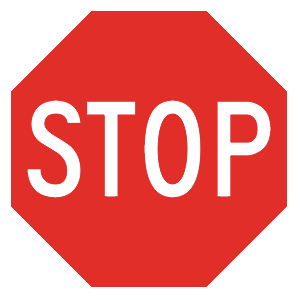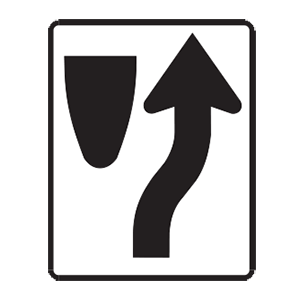2025 Florida Permit Test 19
The following questions are from real DMV written tests. These are some of the actual permit questions you will face in Florida. Each permit practice test question has three answer choices. Select one answer for each question and select "grade this section." You can find this button at the bottom of the drivers license quiz. For a complete list of questions and answers for Florida please visit https://cheat-sheets.dmv-written-test.com/en/florida/car.
Number of Tests
Number of Question
Passing Score
36. When you see this sign, you must:

Explanation
Any eight-sided sign is a stop sign. At an intersection with a stop sign, you must stop completely and check for pedestrians and cross traffic in the intersection. Wait for the intersection to clear before proceeding.
37. This sign means:

Explanation
Regulation signs regulate traffic speed and movement, displaying rules which drivers must obey. This regulation sign indicates that drivers should keep right to avoid an upcoming potential driving hazard.
38. When approaching a school bus stopped with its stop arm extended, drivers should:
Explanation
When approaching a stopped school bus that is using its stop signal, a driver is required to come to a complete stop. They should not proceed until the stop arm is withdrawn.
39. If you experience a tire blowout:
Explanation
If you experience a tire blowout, take your foot off the gas pedal and do not immediately apply the brakes. Gradually slow down before gently applying the brakes and pulling off the side of the road.
40. Drowsy drivers:
Explanation
Drowsiness can make people drive so poorly that they appear to be drunk. Opening a window, turning on the radio, or drinking coffee is not enough to make a drowsy driver alert to roadway hazards.
41. When approaching a steady yellow traffic light, drivers should:
Explanation
A steady yellow traffic light indicates that a red light is about to appear. Stop unless you are already within the intersection.
42. Emergency vehicles:
Explanation
